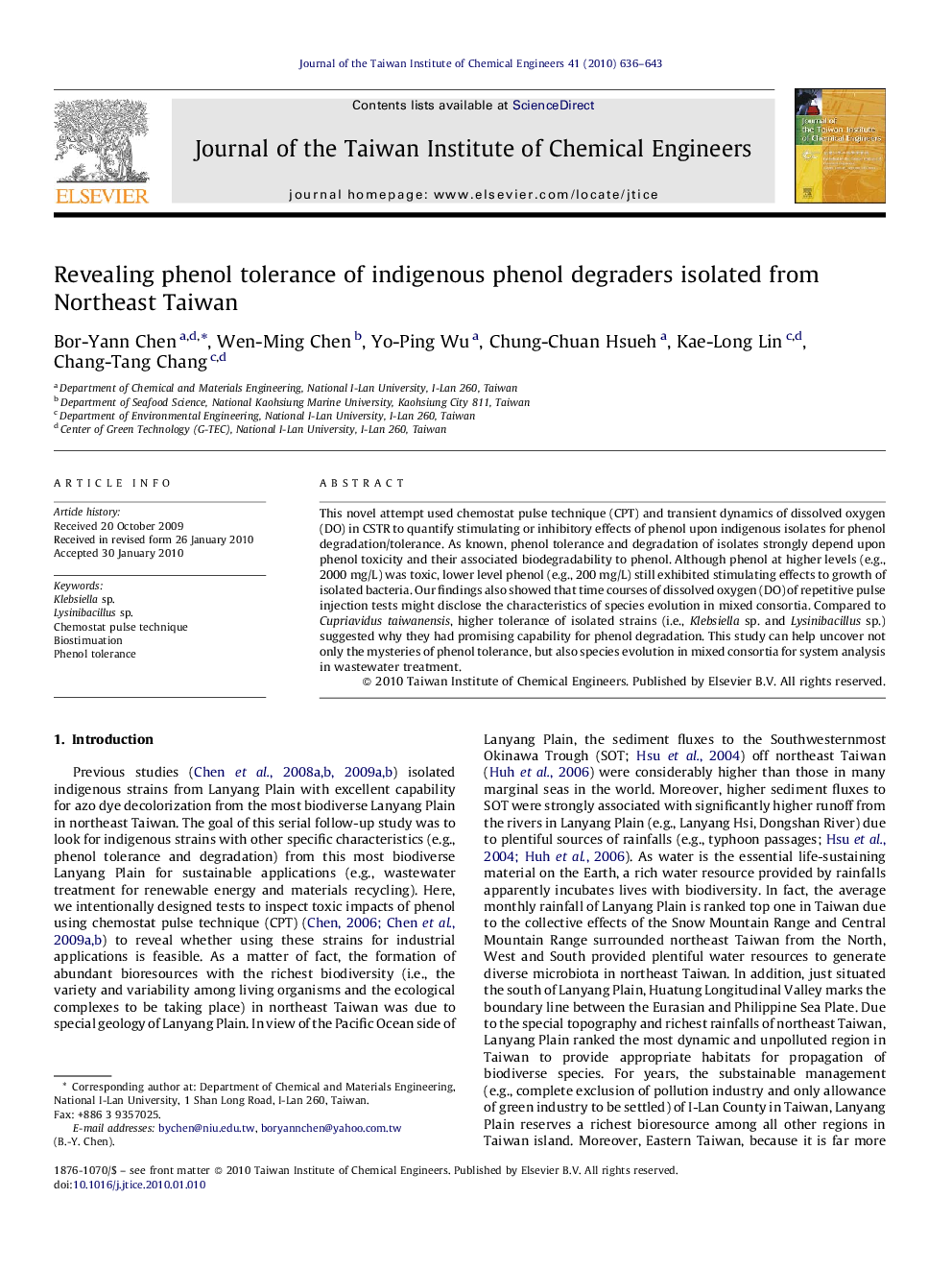| Article ID | Journal | Published Year | Pages | File Type |
|---|---|---|---|---|
| 691647 | Journal of the Taiwan Institute of Chemical Engineers | 2010 | 8 Pages |
This novel attempt used chemostat pulse technique (CPT) and transient dynamics of dissolved oxygen (DO) in CSTR to quantify stimulating or inhibitory effects of phenol upon indigenous isolates for phenol degradation/tolerance. As known, phenol tolerance and degradation of isolates strongly depend upon phenol toxicity and their associated biodegradability to phenol. Although phenol at higher levels (e.g., 2000 mg/L) was toxic, lower level phenol (e.g., 200 mg/L) still exhibited stimulating effects to growth of isolated bacteria. Our findings also showed that time courses of dissolved oxygen (DO) of repetitive pulse injection tests might disclose the characteristics of species evolution in mixed consortia. Compared to Cupriavidus taiwanensis, higher tolerance of isolated strains (i.e., Klebsiella sp. and Lysinibacillus sp.) suggested why they had promising capability for phenol degradation. This study can help uncover not only the mysteries of phenol tolerance, but also species evolution in mixed consortia for system analysis in wastewater treatment.
